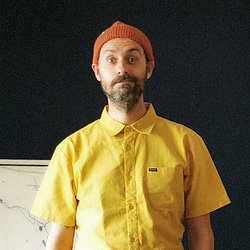Pressmeddelande -
Pressinbjudan till ballongdag på IRF - resultat från marsmission i jordens atmosfär
Ballongdag - MEAP/P-BACE-evenemang vid IRF i Kiruna
torsdag 9 oktober, kl. 9-12
Med bilder: http://www.irf.se/link/press_081006
På torsdag (9 oktober) arrangeras en Ballongdag vid Institutet för rymdfysik (IRF) i Kiruna för att summera resultaten av ballongmissionen MEAP (Mars Environment Analogue Platform). Under sommaren 2008 skickade IRF, Universität Bern i Schweiz och Rymdbolaget upp en masspektrometer med en stratosfärsballong från Rymdbolagets anläggning Esrange Space Center i Kiruna. Då utprovades masspektrometern P-BACE (Polar Balloon Atmospheric Composition Experiment), som primärt har utvecklats för att genomföra en rad mätningar på Mars under kommande rymdfärder. Masspektrometern utprovades i jordens stratosfär, en miljö som har många likheter med förhållanden vid ytan på planeten Mars.
Media inbjuds till detta evenemang i Aulan på Rymdcampus i Kiruna, kl. 9.00-12.00 på torsdag (9 oktober). En särskild session för media hålls kl. 11.45. Anmäl deltagande till Rick McGregor, informationsansvarig, IRF, tel. 070-276 6020, rick@irf.se, senast kl. 17 på onsdag (8 oktober).
********************************************************************
MEAP/P-BACE Event at IRF in Kiruna
A one day event to be held at the Swedish Institute of Space Physics (IRF) in Kiruna on Thursday (9 October 2008), will summarize the results of the MEAP (Mars Environment Analogue Platform) stratospheric balloon mission. The aim of the MEAP mission was to fly a stratospheric balloon on a semicircular trajectory around the North Pole in the summer of 2008. The balloon platform carried the high resolution neutral gas mass spectrometer P-BACE (Polar Balloon Atmospheric Composition Experiment). MEAP was launched at Esrange, Kiruna, on 28 June and it landed successfully near Umingmaktok, Canada, on 3 July after a more than 5000 km long flight at heights of up to 39 km.
From the Earth to Mars, technical interest
The atmospheric conditions (temperature and pressure) at 30-40 km altitude are remarkably similar to those on the surface of Mars. A stratospheric balloon is thus an ideal testbed for instrumentation to be used on Martian landers. The P-BACE instrument, developed to measure the composition of the atmosphere at the surface of Mars, proved its worth for such future applications. About 4500 high resolution mass spectra of stratospheric composition were obtained during the flight.
Scientific interest
An altitude of 40 km in the terrestrial atmosphere is at the upper end of the ozone layer. This is a region in the atmosphere where there is a lot of photochemistry going on driven by the absorption of solar UV photons. Moreover, there are additional chemical processes because of frequent ion-neutral reactions.
Platform test for future flights
The flight was also used to test and qualify systems for balloon platform control, communication and solar power. Wheras the MEAP mission only covered 120 degrees of longitude, future stratospheric balloon flights launched at Esrange may do a full circle around the North Pole.
o MEAP/P-BACE is a joint project between the Swedish Institute of Space Physics, Esrange Space Center (Swedish Space Corporation) and the University of Bern, Switzerland.
o The MEAP balloon platform was built and operated by Esrange Space Center (SSC).
o The P-BACE instrument was developed in collaboration by the Swedish Institute of Space Physics and the University of Bern.
Programme
09.00-10.10 - History of atmospheric mass spectroscopy (Ernest Kopp, UBe, ca. 30 min)
- MEAP/PBACE launch and flight (Martin Wieser, IRF, ca. 40 min)
10.10-10.40 - Coffee and cake
10.40-11.45 - PBACE instrument and first results (Peter Wurz, UBe, ca. 30 min)
- Plans for the future: Planetary missions and new balloon missions (Peter Wurz, UBe ca. 20 min)
- ESRANGE activities (Olle Norberg, Esrange, 20 min)
11.45-12.00 - Meeting with media (MEAP/P-BACE Project team, ca 15 min)
********************************************************************
Kontaktinformation:
Dr Martin Wieser, projektledare, IRF, tel. 0980-79198, 070-277 1287, wieser@irf.se
Rick McGregor, informationsansvarig, IRF, tel. 0980-79178, 070-276 6020, rick@irf.se
Webbsidor:
Institutet för rymdfysik: http://www.irf.se
Rymdbolaget och Esrange Space Center: http://www.ssc.se
Space and Research Planetary Sciences, Universität Bern: http://www.space.unibe.ch/
MEAP/P-BACE-projektet: http://www.irf.se/meap-pbace
Pressmeddelandet och bilder: http://www.irf.se/link/press_081006

